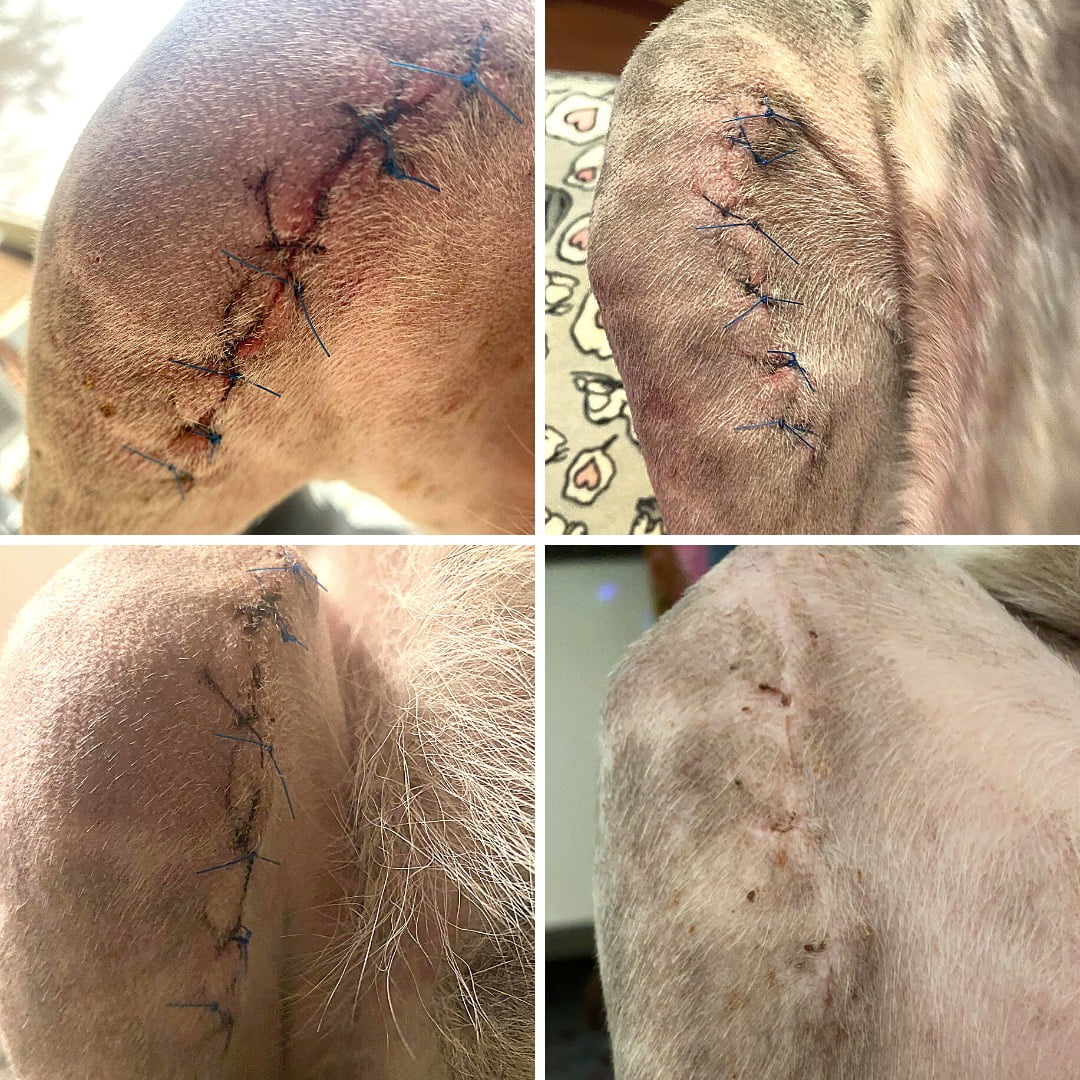Just How Red Light Therapy Can Boost Your Dog's General Health
Red Light Therapy has emerged as an appealing option for boosting canine health and wellness. This non-invasive treatment promotes mobile task and promotes healing in dogs struggling with different disorders. Several pet proprietors report noticeable benefits, including pain alleviation and boosted movement. Recognizing the hidden systems and prospective applications is important. What details problems can it attend to, and exactly how can it be securely incorporated into a dog's treatment regimen? The answers may surprise you.
Understanding Red Light Therapy: What It Is and Exactly how It Works
Although red light therapy has actually gained popularity in human medicine, its application for dogs is increasingly recognized for its possible advantages. This non-invasive treatment uses details wavelengths of light, generally in the near-infrared and red spectrum, to stimulate mobile function. The underlying concept involves the absorption of light by mitochondria, which enhances ATP production and enhances cellular metabolism.
Consequently, red light therapy promotes improved blood circulation and aids in tissue repair service. The therapy is supplied through tools such as lasers or LED panels, which can be directed at details locations of a pet's body. Treatment sessions are typically short, making it a practical alternative for pet dog proprietors.
Comprehending this technology's devices can aid caregivers make informed choices concerning their dog's healthcare. As study remains to develop, the passion in red light therapy as a complementary therapy technique for various canine conditions is likely to expand.

Advantages of Red Light Therapy for Dogs
Red light therapy uses several significant benefits for pets, consisting of effective discomfort alleviation and a sped up recovery process. This therapy can improve movement and adaptability, making it particularly beneficial for aging or hurt family pets. As more family pet owners seek alternate treatments, comprehending these benefits comes to be increasingly important.
Discomfort Alleviation Applications
Many pet dog owners are transforming to red light therapy as an encouraging service for minimizing pain in their pet dogs. This non-invasive treatment uses particular wavelengths of light to pass through the skin, stimulating mobile task and reducing swelling. Dogs struggling with persistent problems such as joint inflammation, hip dysplasia, or post-surgical pain might experience considerable relief via this therapy. Studies show that red light therapy can boost blood circulation, assisting to deliver essential nutrients to impacted locations, additionally adding to discomfort reduction. Additionally, it might assist to reduce the dependence on pharmaceutical painkiller, which often come with unfavorable side effects. Because of this, lots of vets are progressively advising red light therapy as a safe and reliable alternative for taking care of discomfort in dogs.

Accelerated Recovery Process
The advantages of red light therapy prolong past discomfort alleviation, playing an important role in speeding up the recovery process for pets. This innovative therapy advertises mobile regrowth, promoting the manufacturing of ATP, which boosts energy accessibility for healing cells. Additionally, red light therapy boosts blood circulation, leading to boosted oxygen and nutrient distribution to wounded areas. This increased circulation not just help in faster healing but also decreases swelling, a typical barrier to healing. Furthermore, the therapy motivates collagen production, essential for tissue repair service and regeneration. Overall, by assisting in these biological processes, red light therapy considerably shortens healing times, enabling pet dogs to go back to their normal tasks quicker and with higher vitality.
Boosted Movement and Versatility
Improved wheelchair and flexibility are considerable benefits of red light therapy for pet dogs, particularly for those struggling with joint discomfort or rigidity. This non-invasive treatment uses particular wavelengths of light to penetrate cells, promoting enhanced circulation and minimizing swelling. Consequently, dogs frequently experience remedy for discomfort related to arthritis, hip dysplasia, or post-surgical recuperation. Normal sessions can boost cellular repair service and enhance muscular tissue feature, permitting canines to regain their all-natural variety of motion. Proprietors have reported visible improvements in their family pets' capacity to run, jump, and participate in tasks they as soon as appreciated (Red Light Therapy Dogs). Inevitably, red light therapy not just assists relieve pain however likewise contributes to a much more energetic and meeting way of living for pet dogs, boosting their general top quality of life
Conditions That Can Be Treated With Red Light Therapy
Although red light therapy has actually obtained appeal in numerous fields, its application in veterinary treatment, especially for canines, has revealed assurance in treating a variety of problems. This non-invasive therapy technique is believed to aid in Full Report minimizing pain and inflammation associated with joint inflammation, aiding older pets gain back flexibility. In addition, it has been utilized to help in the recovery of wounds, burns, and surgical cuts, advertising faster recovery times.
Skin disease, such as dermatitis and warm places, may also react positively to red light therapy, reducing irritation and encouraging much healthier hair development. Moreover, the therapy can be useful for pets experiencing problems like hip dysplasia, ligament injuries, and muscle pressures. By boosting cellular repair work and boosting flow, red light therapy supplies an all natural strategy to improving the overall well-being of canines, supplying relief and advertising a far better lifestyle.
The Scientific Research Behind Red Light Therapy
Red light therapy operates the principle of photobiomodulation, which entails the application of certain wavelengths of light to boost cellular procedures. These wavelengths, commonly varying from 600 to 1000 nanometers, permeate the skin and are absorbed by mitochondria, the energy-producing components of cells. This absorption improves ATP production, bring about increased energy accessibility for mobile functions.

Researches recommend that red light therapy may likewise modulate immune feedbacks and assistance total mobile wellness. By harnessing these biological systems, red light therapy uses a non-invasive therapy option that can add significantly to a pet dog's health and recuperation from various problems.
Just How to Incorporate Red Light Therapy Into Your Dog's Routine
Incorporating red light therapy into a canine's regimen can be an uncomplicated process, provided that family pet owners approach it with care and uniformity. First, selecting a suitable gadget is basic, browse around these guys as alternatives range from handheld devices to bigger panels. Owners ought to start by introducing the therapy slowly, permitting their pets to accommodate to the light exposure. Procedure can be set up for about 10 to 20 minutes, preferably a couple of times a week, depending on the pet's needs and the guidance of a veterinarian
Establishing a comfortable environment is necessary; using a silent space where the pet dog really feels kicked back can boost the experience. Throughout the sessions, owners can involve their pets with soothing voices or gentle stroking to produce a soothing atmosphere. Keeping track of the canine's reaction is important to guarantee the therapy is helpful and satisfying, eventually assisting to enhance their total wellness.
Security Considerations and Precautions for Red Light Therapy
When thinking about red light therapy for pet dogs, safety and security should constantly be a top concern to assure a favorable experience. Animal proprietors must seek advice from a official statement vet prior to starting any type of therapy, especially for dogs with pre-existing conditions or those taking drugs. It is vital to select devices specifically developed for pets, as human tools may not be appropriate.
Appropriate eye protection is essential; both the pet and the trainer ought to use safety glasses to secure their eyes from possible injury. In addition, sessions must be kept track of very closely to avoid too much exposure. It is recommended to begin with shorter sessions and gradually raise period based upon the pet's feedback.
Owners need to additionally observe their pets for any indicators of discomfort or damaging responses during and after treatment. By adhering to these security considerations, red light therapy can be a valuable and secure choice for improving a dog's health.
Regularly Asked Concerns
How Frequently Should I Utilize Red Light Therapy on My Dog?

Can Red Light Therapy Replace Conventional Vet Therapies?
Red light therapy must not change typical vet therapies. While it may enhance treatments by advertising recovery and reducing discomfort, consulting a vet continues to be crucial for detailed care and attending to hidden health concerns in pet dogs.
Are There Any Adverse Effects of Red Light Therapy for Dogs?
Red light therapy for dogs generally has minimal side results, such as short-term skin inflammation or warmth at the treatment site. A lot of canines tolerate the therapy well, yet checking for any unusual reactions is suggested.
What Is the Suitable Duration for every Red Light Therapy Session?
The ideal period for every red light therapy session normally ranges from 10 to 20 mins, relying on the pet dog's particular demands and problem. Assessment with a vet is suggested to customize the therapy suitably.
Is Red Light Therapy Ideal for All Dog Types?
Red light therapy is generally ideal for the majority of dog types. Nonetheless, private health conditions and level of sensitivities might impact its applicability. Consulting a veterinarian guarantees the therapy is safe and useful for each and every specific pet dog.
Numerous pet dog proprietors are turning to red light therapy as an appealing remedy for alleviating pain in their pet dogs. Enhanced wheelchair and versatility are significant benefits of red light therapy for dogs, especially for those experiencing from joint discomfort or rigidity. Red light therapy runs on the concept of photobiomodulation, which includes the application of particular wavelengths of light to stimulate cellular processes. Research study suggests that red light therapy can advertise healing, minimize swelling, and alleviate pain in pets. Red light therapy for pets typically has minimal side impacts, such as short-lived skin soreness or heat at the therapy site.